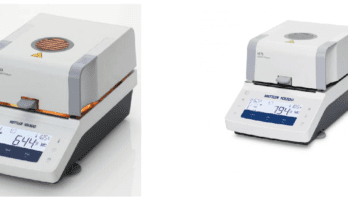Introduction
Everything can be recorded and used for different purposes with today’s technology. Facts and figures, when recorded, are called data. It becomes information when they are analyzed and presented in a specific format. This process of analyzing data and filtering out specific trends or variations is called data analysis. In today’s fast-paced environment and tons of data, data analysts have become more important for making informed decisions.
The role of a data analyst has become significantly important. As more and more data gathers with an organization, there is a higher risk that important information is overlooked. Data analysts help the organizations keep and classify information crucial to the business, utilizing that information to prepare reports for the senior management, identifying trends and other information that might affect their decisions, and maintaining databases and data systems for an organization. Data Analysts can cover all aspects of an organization, from online businesses to international business chains. To achieve their desired outcomes, data analysts use different methods and tools to help them in their work.
With the rising importance of data analysts, different Business schools and universities offer a Master of Business Administration in Data Analytics Degree and other programs for people looking to excel in this field.
Types of Analysis
A data analyst should know which method to choose to analyze the data as further analysis give different results. For any data analysis to conclude, the analyst must take two approaches.
- Quantitative Data Analysis; as the name suggests, analyzing numerical data, e.g., sales growth percentage.
- Qualitative Data Analysis; this is the analysis of non-numerical data, e.g., surveys.
The descriptive analysis analyzes “what” has already happened; historical data, e.g., variances from a budget.
Diagnostic analysis entails analyzing the possible reasons for what has happened. The “why” aspect is under observation in this type of analysis. For instance, why variances occurred in a certain data set.
Predictive analysis is about forecasting what might happen in the future based on historical trends—for example, cash flow forecast for the next three quarters.
We analyze all the previous information in prescriptive analysis to decide on a current or upcoming problem. An example of this; is delivering a personalized customer experience.
However, before we delve deeper into some of the tools, it’s important to know that they only help facilitate the analyst. The analyst needs a strong foundation in statistical research and sufficient business understanding to develop databases and processes and add efficiency. A data analyst should understand his business structure. The data analyst should know a few business metrics, such as consumer market, competitive analysis, product map. Furthermore, the analyst needs an understanding of intended users and the idea target audience to improve the accuracy of the analysis.
Tools for Data Analysts
Several tips and tricks help data analysts achieve their desired outcome. A data analyst should have both technical and soft skills. A good data analyst should know when to use which tool as there are so many
Data Modeling Tools
An analyst also helps manage the data and information flow in a business. Different tools help the analysts design a data system and help maintain a database. Erwin Data modeler is effective and proven software that can help increase productivity. This software offers different models suited for different business types and can also help automate process design to minimize the chances of error. Another example of this kind of tool is KNIME which is constantly updated.
Automation Tools
Automation tools make the life of a data analyst easier. Data analysts can set up a customized data analysis program to structure data continuously. Automation tools also help automate parts of a certain process, e.g., testing. The main advantage, in this case, is that it leaves more time for the data analysts to work on processes where AI can’t give optimal results. Examples of automation tools include JENKINS and MONKEYLEARN.
Spreadsheet Software
Microsoft Excel, Google Sheets, and other alternatives are prominent examples of spreadsheet software used most commonly in businesses to handle large amounts of data, apply formulae, and give that data a required format. Data analysts should have the basic skills of Microsoft Excel as it makes their work a lot easier. Excel is not only easy for data analysts to use, but it is also easy for the person who is requiring the report as everyone is quite familiar with it because of its presence.
Data Visualization Tools
These tools help data analysts present different findings in pie charts, one-line graphs, and other visual items that help the intended user easily understand trends or patterns. An example of a data visualization tool is Google Data Studio. Google is the biggest source of information as it has millions of users and is the biggest search engine.
Almost everyone uses Google in their everyday life. The search giant gathers information from its users’ search patterns. Google Data studio integrates that information like ‘customer retention rate’ and helps data analysts find specific results from Google Ads.
Communication Tools
Communication skills are important in almost every field of life. Data analysts should communicate their findings in the simplest way possible. If a data analyst didn’t communicate his findings, he would be of little value to the organization. Technical information is of no use if the intended user can’t understand it. The main role of the data analyst is to add efficiency to the business processes by unwinding scrambled data and hard-to-understand information.
Analysts can use communication tools like Slack, Google Meets, Zoom to host meetings and video conferences. These tools have screen share capabilities, thus, making it easier to present findings. Since communication is the key here, it’s best to view the communication medium’s reviews, tips and tricks before jumping into the presentation.
Conclusion
The role of data analysts is significantly more important as business models shift to the digital sphere. There are an array of software and tools for data analysts to pick. The analyst might also assess whether off-the-shelf software is better suited to fit the requirement or an in-house solution would give the best value to the organization.
If you have missed any important details or tips and tricks to note, mention them in the comments section below.
That was it for this article. If you found it helpful, consider checking out our blog STORIFYGO!





